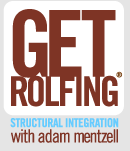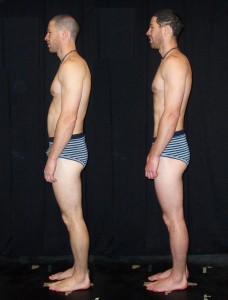“How is it that Rolfing® creates lasting change ?” is a question that I field at least once a week as I work with clients. I can point to how Rolfing systematically organizes the fascial or soft tissue network, and how we help establish balanced relationships in the body, but have recently been pondering the more esoteric old Rolfing adage “awareness makes the change”. No doubt the 10 session series of Rolfing can be a life-changing process and is a powerful answer to many of the musculo-skeletal and postural challenges we can face, but exactly how? Changing our awareness and habit energies seems to play a large role.
Thich Nhat Hanh once gave a lecture about transformation during a retreat I attended in Key West, Florida many years ago. He spoke of true transformation and what were some of the elements required to transform and evolve our consciousness. In describing a model of our mind, he outlined how we have a store consciousness, or Alaya, which contains the seeds of all actions, past and present. By choosing to water the positive, or wholesome seeds within this storehouse these seeds sprout, grow and bloom. I am beginning to see how the Rolfing process allows individuals to touch aspects of themselves that have been living in a dormant state below consciousness awareness. Jan Sultan, one of Ida Rolf”s early students, speaks of how the process of Rolfing can activate an individuals dormant traits, resulting in a new revitalized and higher functioning person. I am beginning to sense that these two phenomenons may be one and the same.
As I work with clients in the Rolfing process we bring mindfulness to the present moment, and, in particular, body awareness. We often have strong conscious or unconscious patterns of relating to our body that have an opportunity to change during the Rolfing process.
“I have bad feet or arches” is something I hear a great deal from new clients. Residing in the Alaya, or storehouse of consciousness, we often have beliefs about our body that are limiting. As an example, an individual may have been told that their feet are inadequate at some point early in life by some well meaning practitioner and has spent years relating to their feet as a liability. This view dwells unexamined in the sub-conscious and can create real limitations for someone and begins to function as reality, when it may not be true.
As the process of Rolfing unfolds we balance the soft tissue in the feet, lower legs and the entire kinetic chain of legs to the spine, while bringing moment to moment awareness to the areas being manipulated. New freedom, range of motion and better support for the spine often emerge. The previously maligned “bad feet” may quickly become a positive resource as they become more functional, and, more importantly, the client gets to re-evaluate their beliefs. The mindfulness of functioning arches, ankle joints and the balanced connection of the legs to the lower spine can be a revelation for many clients. As a client becomes more embodied, meaning more at home in their flesh and more aware, a new sense of integration arises and person begins to relate differently to the world around them. “How is it this work lasts so long?”. Change has occurred in the tissues, in the function of the body, but most importantly in the awareness of the client. He or she is now moving through life with a new view of their body. The feet are now a resource and not a liability. This change in awareness happens mostly at the level of sensation. There is a felt sense, in the flesh, that things are healthy and vibrant. Seeds of wholeness and vitality are as a result being watered constantly and real change occurs. Change that lasts.
The tincture of time. Many of the patterns of poor posture, habitual tension and holding that we have in our bodies did not show up overnight but have been around for years. These seeds have sprouted and have a sense of permanence. In order to steer things in a new direction of freedom and ease, it will take a bit of time. The traditional Rolfing 10-series consists of 10 individual sessions, with each being 75 minutes in length. This approach is not about chasing symptoms, but taking a larger view of the structural order and function of the body and creating change at a deep level. Often what appears at the level of symptoms, such as low back pain or headaches, is merely a manifestation of a deeper situation. By looking deeply at all the major structural and functional relationships in the body we can see how deeper patterns of dysfunction can be driving strain all over the body resulting in pain and discomfort. We can then gently intervene and release restrictions in the fascial system, allowing muscles to return to a balanced relationship and allow the body to release compensatory patterns. As this occurs, we assist the client in staying mindful of these changes and the contrast between “old” patterns and “new” possibilities. Homework between sessions is often directed at staying mindful and watering the seeds of a new pattern like feeling the breath move in three dimensions while sitting at work. Over a short period of time dramatic changes in function happen as a result of releasing restrictions and increased embodiment, or awareness.
The pace of our modern life is relentless. We are pulled in multiple directions and the amount of information that we are processing is staggering. One result of these demands is that we, as James Joyce said of his character in Dubliners, “Mr. Duffy lived a short distance from his body”. In this living a short distance from our bodies we are operating in an unconscious state and likely repeating patterns of holding, tension and dysfunction which result in pain and discomfort.
Ten sessions can change your life. Bold, but true. By creating time to reconnect, and come home to our body through the Rolfing process we have the opportunity to really change underlying patterns and move in the direction of freedom and ease in our body. The seeds to a more vibrant, balanced and comfortable body are already present in us. We only have to bring them into awareness and water and nurture them. The Rolfing process provides an opportunity to do just that and is a gift we can give ourselves that will create lasting change and transformation. By closing the distance we live from our bodies we become more whole, more complete, more fully human.
What are you waiting for?






